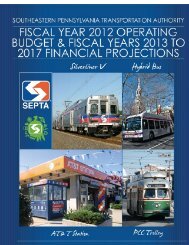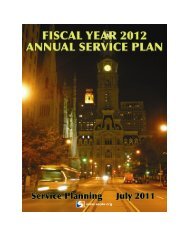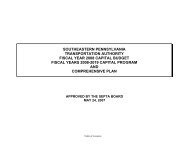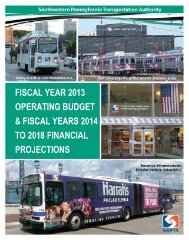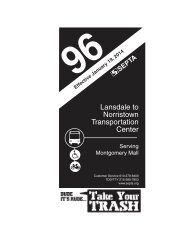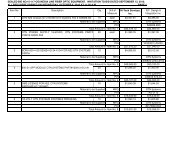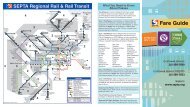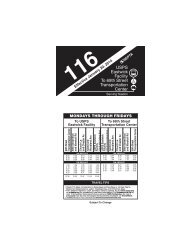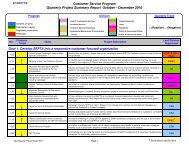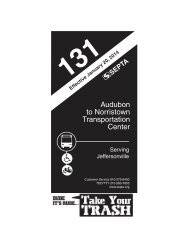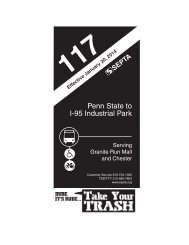FY 2012 Capital Budget and FY 2012-2023 Capital Program - Septa
FY 2012 Capital Budget and FY 2012-2023 Capital Program - Septa
FY 2012 Capital Budget and FY 2012-2023 Capital Program - Septa
You also want an ePaper? Increase the reach of your titles
YUMPU automatically turns print PDFs into web optimized ePapers that Google loves.
`<br />
FUNDING OUTLOOK AND SHORTFALL<br />
Funding Sources<br />
Federal<br />
Fiscal Year 2009 was the final year of the U. S. Transportation Act - Safe, Accountable, Flexible, <strong>and</strong> Efficient Transportation<br />
Equity Act - A Legacy for Users (SAFETEA-LU). As work on the reauthorization of a new Surface Transportation bill continues,<br />
Congress <strong>and</strong> the President have approved an extension of SAFETEA-LU through September 30, 2011. The American Public<br />
Transportation Association (APTA) <strong>and</strong> the transit industry are working with the Administration <strong>and</strong> members of Congress on<br />
reauthorization. It is uncertain at this time how this bill will be framed in terms of funding levels or grant programs. The Authority will<br />
assume for this proposal that the following SAFETEA-LU programs will continue to be in effect in Fiscal Year <strong>2012</strong>.<br />
Formula <strong>Program</strong>s – Formula programs are those for which funds are appropriated by a formula specified in authorizing law. Funding<br />
programs applicable to SEPTA include Urbanized Area, Growing States, New Freedom, <strong>and</strong> Job Access <strong>and</strong> Reverse Commute.<br />
<strong>Program</strong>s include:<br />
• Urbanized Area Formula <strong>Program</strong> (Section 5307) – Formula funding allocations are based on population statistics for urbanized<br />
areas <strong>and</strong> operating statistics reported by transit agencies. Statistics used include population, population density, vehicle<br />
revenue miles, fixed guideway route miles, passenger miles, <strong>and</strong> operating costs.<br />
• Growing States <strong>and</strong> High Density States (Section 5340) – Funds are apportioned as follows: one-half of the funds made<br />
available under the Growing States formula are apportioned by a formula based on state population forecasts for 15 years<br />
beyond the most recent Census; the other half of the funds are available under the High Density States formula <strong>and</strong> are<br />
apportioned to states with population densities in excess of 370 persons per square mile. Seven states are identified in<br />
SAFETEA-LU to receive High Density States funds – Connecticut, Delaware, Maryl<strong>and</strong>, Massachusetts, New Jersey, New<br />
York, <strong>and</strong> Rhode Isl<strong>and</strong>. These funds are apportioned only to urbanized areas within those states.<br />
• Job Access <strong>and</strong> Reverse Commute (JARC) <strong>Program</strong> (Section 5316) - The JARC program is allocated by formula, rather than<br />
by a competitive discretionary grant program as was the case under the prior Transportation legislation. The formula is based<br />
on ratios involving the number of eligible low income <strong>and</strong> welfare recipients in urban <strong>and</strong> rural areas. The program’s objective<br />
is the provision of maximum flexibility to job access projects designed to meet the needs of individuals who are not effectively<br />
served by public transportation. Coordination of this program is required between private, non-profit, <strong>and</strong> public transportation<br />
providers <strong>and</strong> other federal programs including coordination with the New Freedom program <strong>and</strong> the Elderly <strong>and</strong> Disabled<br />
program.<br />
17



